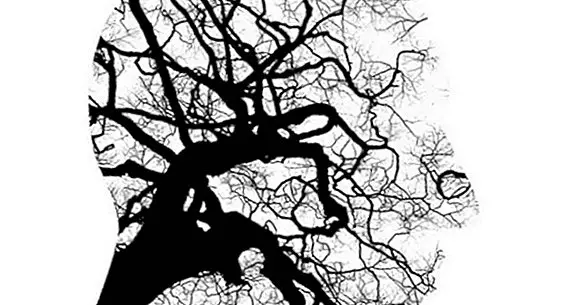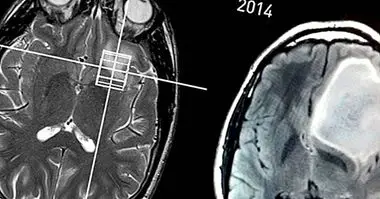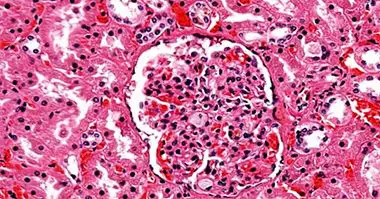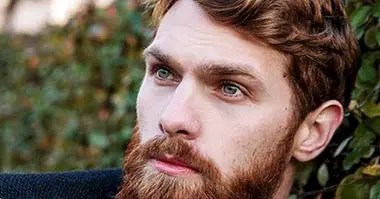Psychodynamic therapy: theoretical, technical and current bases
The set of therapies that we know as "psychoanalysis" has branched enormously since Freud created his famous psychoanalytic type cure, which many people still mistakenly conceive as the archetype of clinical psychology.
In this article we will analyze the theoretical bases, the currents and the main techniques of psychodynamic therapy , a group of interventions based on the contributions of authors who developed and questioned Freudian psychoanalysis to maximize the usefulness of its tools.
- Related article: "Types of psychological therapies"
What is psychodynamic therapy?
Psychodynamic therapies, also known as psychodynamic psychotherapies , are therapeutic approaches that are based on the theoretical contributions of classical psychoanalysis, represented by Sigmund Freud, and / or its most recent developments.
Although both currents have a very close conceptual anchor, psychodynamic therapy differs from the psychoanalytic type cure in several key aspects. Between these highlights the shortest of interventions , the lower intensity of treatment, the multiplicity of therapeutic focuses and the relative emphasis on scientific validation.
It is difficult to establish clearly the limits between psychodynamic therapies and other interventions framed in psychoanalysis, since there are a large number of different therapies; however, the above criteria are often used as indicators of the proximity of a treatment with the "psychodynamic therapy" construct.
- Maybe you're interested: "9 differences between Psychoanalysis and Psychodynamic Therapy"
Theoretical bases
Like the rest of its developments, psychodynamic therapies share the focus of classical psychoanalysis in the Importance of unconscious processes for behavior , thoughts and emotions. Given that unconscious variables are conceived as fundamental determinants of behavior, treatment should focus on them.
The symptoms of neurosis, historical focus of psychoanalysis, are understood from these orientations as "compromise solutions" to the conflict between unconscious impulses and moral self-demands, to which Freud gave the metaphorical name "Superyó".
Another central aspect of psychoanalytic theory is the fact that the personality is formed during childhood based on how basic needs are met. Since personal history is always unique, each person is different from the others and requires an individualized treatment.
Those who practice these therapies usually defend that their goal is for the client to get to know their true Self; For this, a deep personality analysis is necessary. However, psychodynamic therapies in general are characterized by greater focus on the person's current problems , in comparison with the psychoanalytic type cure.
Thus, we could say that psychodynamic therapies are those that attempt to adapt the principles of psychoanalysis, be it that of Freud or that of the theorists who followed him, to the context of modern psychotherapy. In addition this type of intervention seeks to add the emphasis on the individual and his unconscious to the contributions of other psychological currents.
- Perhaps you are interested: "The 9 types of Psychoanalysis (theories and main authors)"
Streams of psychodynamic therapy
Even though Psychodynamic therapy approaches are as broad as variants exist and, as we have said, it is not always possible to distinguish them from the classical forms of psychoanalysis, we can differentiate three main currents within the framework that concerns us.
1. Neofreudian therapy
Authors such as Carl Jung, Alfred Adler, Karen Horney, Harry Stack Sullivan, Erich Fromm, Wilhelm Reich and Sándor Ferenczi are often classified as "neo-Freudians" because they extended Freud's theories by critiquing key aspects of his work, such as the emphasis on infantile sexuality, the concept of the death drive or the lack of attention to the psychosocial.
Neofreudian therapy is based on the reviews made by one or several of these authors on the postulates of the teacher. From neofreudismo, as from the analytic tradition of the ego, is emphasized in the role of the I and the conscious against the almost exclusive focus of classical psychoanalysis on the id and the unconscious.
2. Psychoanalytic tradition of the I
This concept encompasses two intimately related schools: the psychology of the Self, developed in the United States and represented by Anna Freud, Heinz Hartmann or Erik Erikson, and the object relations theory , British orientation in which they emphasize Melanie Klein, Donald Winnicott or Ronald Fairbairn.
These currents put the mental representation we make of our interpersonal relationships at the center of the intervention. More attention is paid to the present than in Freudian psychoanalysis, and the direct analysis of the therapeutic relationship over that of transference is prioritized.
3. Psychoanalytic psychotherapies
It is considered that psychoanalytic psychotherapies are all those that are based on the theoretical postulates of the psychodynamic tradition but that they do not derive their intervention methods from the psychoanalytic type cure . These therapies are very varied but are usually characterized by their brevity and by adapting to different types of psychological difficulties.
Among the best known psychoanalytic psychotherapies we find brief dynamic psychotherapy, inspired by the contributions of Ferenczi and Otto Rank, short psychotherapy with provocation of Sifneos' anguish, Mann's limited time psychotherapy and Davanloo's technique of deactivating the unconscious.
Methodology and techniques
The psychodynamic therapies focus on revealing unconscious conflicts which determine the client's current problems by solving them. Since these interventions broadly share the theoretical basis of classical psychoanalysis, the same applies to techniques and methods.
Thus, they are often used characteristic techniques such as free association , the analysis of dreams, the identification and deactivation of defense mechanisms and the interpretation of transference and countertransference.
Depending on the intervention of which we speak, and even on the specific therapist, the techniques will have a more or less eclectic character; It is important to bear in mind that many psychodynamic therapists nowadays use techniques developed within the framework of other theoretical orientations, such as the exhibition or the empty chair.
The attitude of the psychodynamic therapist tends to be less rigid than that of the psychoanalytic. Although in many cases the abstinence rule is enforced , the modernization of the proposals of psychoanalysis has led to a general relaxation of the therapeutic relationship within the framework of psychodynamic therapies.
- Perhaps you are interested: "What is 'free association' in Psychoanalysis?"



















